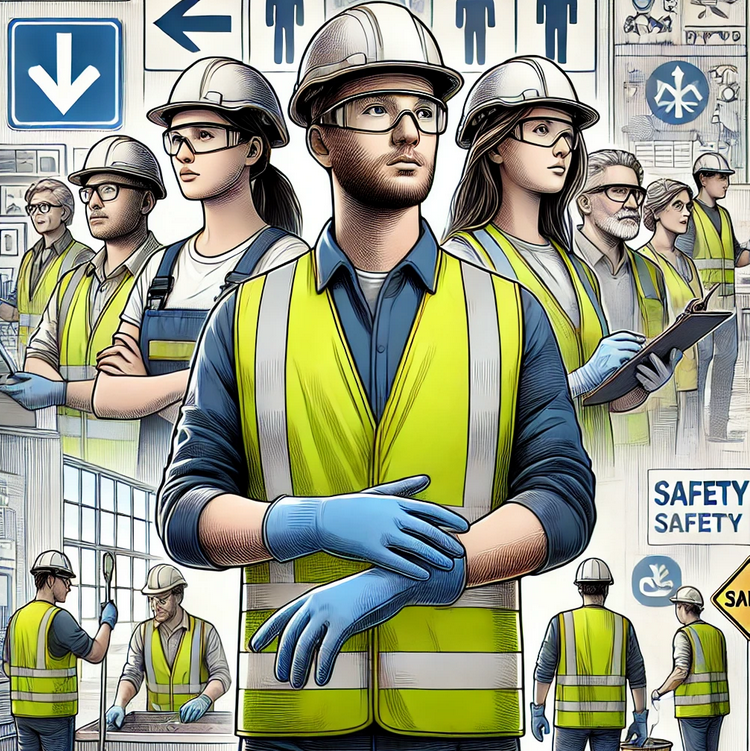The Forgotten Frontline: OHSE for Volunteer and Nonprofit Workers
Volunteers and nonprofit workers form the backbone of communities, dedicating their time and effort to support causes that create positive change. However, their unique occupational health, safety, and environment (OHSE) challenges often go unnoticed.

Unlike traditional employees, these workers may lack consistent safety oversight, training, or access to the resources they need to protect themselves. Addressing these gaps is essential to ensure the well-being of this invaluable workforce.
Risks for Volunteers and Nonprofit Workers
Volunteers and nonprofit workers often operate in diverse and unpredictable environments. Their roles can vary significantly, from distributing food at shelters to assisting in disaster-stricken areas. These settings can expose them to a range of hazards:
| Common Risks | Examples |
|---|---|
| Physical Hazards | Lifting heavy objects, slips, trips, and falls |
| Environmental Hazards | Extreme weather conditions, exposure to chemicals |
| Biological Hazards | Contact with infectious diseases or unsanitary conditions |
| Emotional and Psychological Stress | Compassion fatigue, stress from high-pressure scenarios |
| Lack of Training and Equipment | Insufficient knowledge of safety protocols or lack of PPE |
Legal and Regulatory Framework
Unlike traditional employees, volunteers often fall outside the purview of labor laws that mandate workplace safety. This gap creates uncertainty around who is responsible for ensuring their safety.
Key Considerations:
- Employer Responsibility: Nonprofit organizations should adopt a proactive approach to safety, regardless of legal obligations.
- Volunteer Agreements: Establish clear terms of engagement, including safety expectations and responsibilities.
- Applicable Standards: Refer to general OHSE guidelines, such as those from OSHA or CCOHS, to build a robust safety framework.
OHSE Strategies for Volunteers and Nonprofit Workers
Creating a safe environment for nonprofit workers and volunteers requires tailored strategies. Here are key steps organizations can take:
1. Comprehensive Risk Assessments
- Conduct site-specific evaluations to identify potential hazards.
- Assess risks based on the nature of the work and the volunteer’s role.
2. Safety Training and Education
- Provide initial and ongoing training on safety protocols, including:
- Lifting techniques
- First aid and emergency response
- Proper use of personal protective equipment (PPE)
3. Access to Proper Equipment
- Ensure all volunteers have access to PPE, such as gloves, masks, or high-visibility vests, depending on the task.
- Maintain equipment in good condition and replace it as needed.
4. Clear Communication
- Use signage, briefings, and written instructions to convey safety information.
- Establish a chain of command for reporting hazards or incidents.
5. Mental Health Support
- Recognize the emotional toll of volunteer work, especially in high-stress environments.
- Provide access to counseling services or peer support groups.

Case Studies: Safety in Action
Community Food Bank Volunteers
Volunteers at a food bank faced repetitive strain injuries from lifting heavy boxes. The organization introduced lifting training and provided trolleys to reduce physical strain, resulting in fewer injuries.
Disaster Relief Workers
In a flood-affected area, volunteers were equipped with waterproof boots, gloves, and respiratory masks to protect them from contaminated water and debris. Safety briefings were held daily to address evolving hazards.
The Role of Technology in Volunteer Safety
Technology can play a crucial role in enhancing safety for nonprofit workers:
- Mobile Apps: Apps like SafetyCulture allow organizations to conduct digital safety audits and incident reporting.
- Online Training Platforms: E-learning modules provide accessible and scalable safety training.
- Wearable Devices: Devices like GPS trackers can ensure volunteer safety in remote or disaster-prone areas.
Employer and Volunteer Responsibilities
Organizational Responsibilities:
- Conduct risk assessments and implement controls.
- Provide training and resources for safety.
- Monitor and review safety practices regularly.
Volunteer Responsibilities:
- Follow safety guidelines and report hazards.
- Use provided PPE correctly.
- Communicate any limitations or health concerns.
Building a Culture of Safety
Fostering a culture of safety within nonprofit organizations ensures that safety becomes an integral part of operations:
- Leadership Commitment: Leaders must prioritize and model safe practices.
- Engagement: Involve volunteers in safety discussions and decision-making.
- Continuous Improvement: Regularly review and update safety policies based on feedback and incident reports.
Volunteers and nonprofit workers are the unsung heroes who provide critical services in challenging conditions. Ensuring their safety is not just a moral responsibility but a practical necessity to sustain their invaluable contributions.
By implementing comprehensive OHSE strategies, organizations can protect these workers and create environments where they can thrive while making a difference.
For more resources on workplace safety, visit OHSE.ca or Nonprofit Risk Management Center.

No comments yet